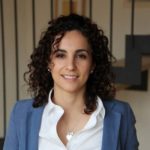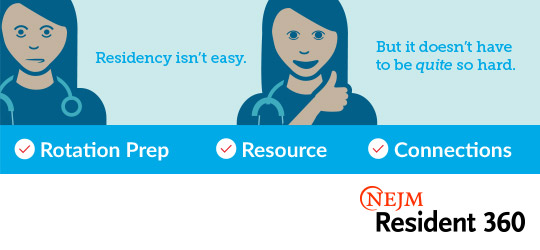October 16th, 2020
Advancing Patient Safety in the COVID Era and Beyond
Frances Ue, MD, MPH
The U.S. continues to lead the world with almost 8 million COVID-19 cases and rising. The resurgence of coronavirus cases in areas previously unaffected or with cases under control shows how vulnerable our society is to the ravages of this disease and the devastating toll it can take on affected livelihoods and communities. It can feel at times that the progress made in the spring has been lost — but I urge you not to lose hope.
The COVID-19 pandemic exposes the weaknesses of our underfunded public health system and the challenges within our national leadership structure, both of which are needed to provide a coordinated response in this crisis. It also highlights the importance of our patient safety colleagues who continue to lead and innovate to ensure safe patient care. One such colleague is my dear friend, Dr. Liana Zucco. She is a Canadian British-trained anesthesiologist and a healthcare quality and safety fellow at the Beth Israel Deaconess Medical Center (BIDMC). I had the pleasure of interviewing her for this post.
(Interview transcript edited for length.)
Frances Ue: Tell us about yourself and what it’s been like being in the U.S. as a Canadian British-trained doctor?
Liana Zucco: I’ll first start by saying that I usually have to explain my origin, because when I say I’m a Canadian-born British-trained anaesthetic or anesthesiologist, everyone asks me what my accent is. There’s a lot of explaining, and everyone loves the story, they really do. And I find that I just keep on telling people about my life and about the journey that I’ve been on. It actually really makes me reflect on growing up and being a student in Toronto, moving to the U.K. for training, and now coming to the U.S. My experience moving from Canada to the U.K. was with my husband, and it became our adventure together. Whereas, this one is solo and trying to juggle a long-distance marriage comes with its own challenges.
It’s been very friendly coming to Boston and the BIDMC. From the anesthesia point of view, I am delighted that the drugs are the same and work the same way; the medicine is the same; the surgeries are the same. That’s really nice and comforting. Obviously the entire healthcare system is different. I thought that by being trained in the U.K. and constantly rotating from hospital to hospital, I was really good at adjusting, but this has been a whole different adjustment. It’s different adjusting to a whole new healthcare system.
FUe: Tell us about your experiences as a woman in medicine and anesthesia.
LZ: Similar to in the U.S., the anesthesia consultant (or attending physician) workforce in the U.K. is predominantly male (68%, Royal College of Anaesthesia, 2018). I certainly do feel that at many institutions, leadership roles are still male-dominated, but more and more, women are being promoted into these roles. Women need to see more women in leadership roles if they too are going to take them on.
I have been fortunate to have trained alongside many women and at times, female majority teams. There are days when I’m in the OR where I’m surrounded by female surgeons, female nurses, female anesthesiologists, and we certainly give each other a high five. And it’s really nice.
I think it’s important to have encouragement and support from the moment you enter medical school — making people aware that these specialties, like anesthesia, exist. And getting people involved and excited by it. It needs to be tackled early.
FUe: What makes you most excited about quality and safety?
LZ: I love the fact that, for most providers, especially junior providers, it is a ground-up movement. People get so frustrated working on the shop floor — they see problems, and they have no idea how to fix them, and they feel that they can’t. There are mechanisms in place for people to improve things from the ground up.
Quality improvement is looking at how organizations can not just be efficient but is actually examining why we should be doing x, y, and z, because it’s not just efficient but also benefits the patient and is safer. Good-quality care is safe care. And the moment that people recognize that is the most exciting. I am part of a specialty where that is literally the forefront — before you do anything else, it is safety first. In the U.K., I became the lead for quality improvement for DAPS (Doctors Advancing Patient Safety), and we published a how-to for junior doctors and started a program teaching quality improvement. That excites me the most — teaching people how to do quality improvement work. My heart just explodes with excitement.
It’s all different levels. Senior management get involved in one aspect, then interns get involved on another level. It’s not just doctors, it’s nurses, it’s super multidisciplinary. There’s a patient engagement aspect of it. It encompasses almost all of healthcare. And when I speak to patients on a daily basis, and they ask what my fellowship is in, they get excited when they hear that a fellowship exists in quality and safety.
FUe: Could you speak about your role during the COVID-19 pandemic?

An initiative to improve communication in the operating room with scrub caps made by Theatre Caps
LZ: As one of the quality and safety fellows within the department of anesthesia, we were tasked with figuring out how to minimize healthcare worker (HCW) infection. Specifically, how to minimize the risk of transmission and risk of viral exposure to HCWs who may be exposed during aerosol generating procedures. We knew from the Toronto SARS-CoV outbreak in 2002 that the majority of HCWs who became infected were intensivists, anesthesiologists, and nurses who were involved in aerosol-generating procedures, particularly in intubation and extubation.
It was our job to re-evaluate the entire workflow of a COVID-19-positive patient coming into the operating room, and we published these recommendations for the Anesthesia Patient Safety Foundation. We considered how to change the workflow, what measures we would change to enhance our infection control, and how to train the staff to follow these new guidelines. We created cognitive aids like checklists to be used in the operating room and trained staff through an in-situ simulation method which is in the actual work environment, to pick up the real hazards that exist and the real gaps in care. And every step of the way, we thought about how to minimize infection.
Our team disseminated the information that we developed, constantly made iterative changes to amend them if needed, and filled the gaps in our care, re-evaluation, training, etc. We started this about 1 month prior to the first COVID-19 case coming to our operating room. We trained over 400 providers in the perioperative department — nurses, surgical teams, surgeons, anesthesia residents, and others, and then we pulled in anesthesia providers from the community hospitals to do the same training. We did about 12 sessions a day for about 3 weeks. And then, that was it, and we just had to hope that it worked! And now we are measuring the impact of that, and we can safely say that not a single anesthesiologist became infected.
Now that the first surge is over, we are modifying all of these new standard operating procedures all over again to be ‘COVID-19 capable’ for the moment we know that a COVID-19 case is present. How do we go back to business as usual but be ready for a COVID-19 case? We had a COVID case the other day, and it was so delightful to hear the circulating nurses say, ‘yes, we need to do everything on the checklist and I have a copy here; we can’t start until we have a huddle.’ These are all things that we implemented, and it was so delightful that I didn’t even have to bring it up.
FUe: Where do you see your career headed?
LZ: My short term plans after this fellowship is done is returning to the U.K. to finish my anesthesia clinical fellowship (known as an advanced training module). In that time, I see myself trying to figure out how to combine a quality and safety fellowship and all the knowledge and experience I have gained, into a full-time working anesthesia career. I really thought I was a die-hard clinician and never wanted to spend a single day outside of the operating room or outside intensive care. However, this fellowship has really taught me that I actually really like a combination of both. I like the combination of having a non-clinical leadership role that has an immediate impact on clinical practice.
FUe: What words of advice do you have for residents who want to get involved in quality and safety research?
LZ: Quality improvement and safety research can be done efficiently, over a short period of time, and you will see the change happening in front of you — you will see improvement, or more efficiency, or a change in practice. It’s so rewarding. Do the online modules from the Institute for Healthcare Improvement to gain knowledge on the topic. Speak to your department because you will need a mentor for it, someone who believes what you believe and wants to change things in the same manner that you do. I have come to appreciate two phenomenal mentors — the director and supervisor of the fellowship, Dr. Krishna Ramachandran, and the director of the Master’s program, Dr. Anjala Tess.
FUe: Lastly, what do you miss the most about the U.K.?
LZ: I actually do miss the people. It’s really the people that make a place your home. I also miss having a role outside of the operating room from a professional perspective. Anesthesia covers everything in the U.K. — you cover intubations in the emergency department, you go on transfers from one hospital to another with an intubated patient. So you really feel like you have a family, not just at your own hospital, but in the entire region and city. I am a Southeast London trainee in the U.K., so I’ve worked at four different hospitals in the Southeast London region, and everybody does that and rotates around. So you feel like you have this enormous family from a professional perspective. From a personal perspective, I miss everything about London. I mean, what’s not to love?
Would love to hear from residents interested in quality and safety. What are your ideas to improve patient safety? Tweet at me, @TheFrancesUe or comment below.




